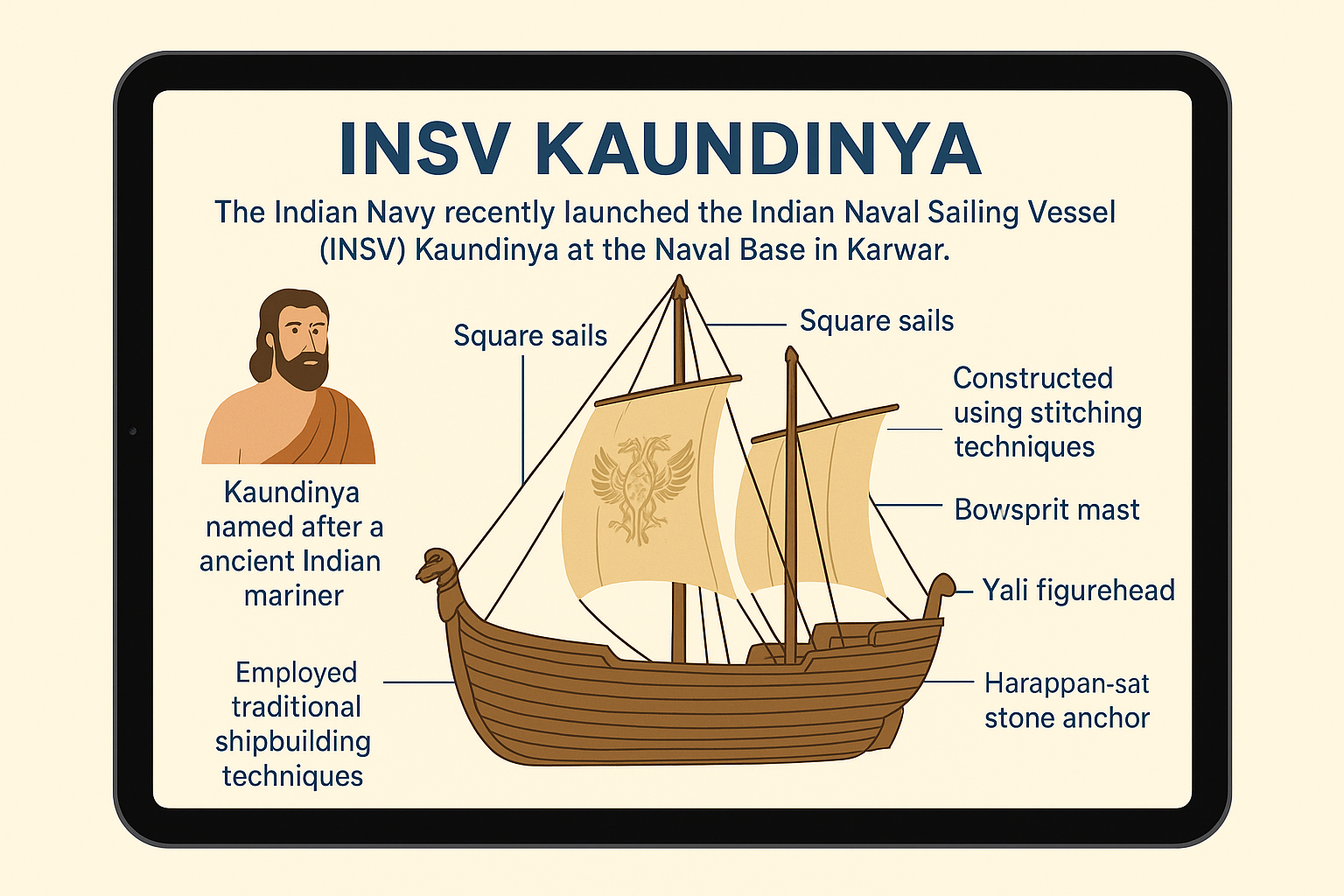
May 15, 2025, Post 1: PM SHRI Scheme vs Kerala |High Quality Mains Essay | Prelims MCQs
PM SHRI Scheme vs Kerala: A Clash of Educational Visions

NATIONAL HERO — PETAL 001
📅 May 15, 2025
🎯 Thematic Focus:
School Education • Federal Governance • NEP 2020 • State-Centre Relations
🌿 Whisper of the Day:
“When vision differs, roots and branches stretch in separate skies — but the forest remains India.”
🔹 Key Highlights
- Kerala to Supreme Court: Kerala government will move the Supreme Court over the Centre’s withholding of ₹1,500 crore in education funding, citing non-adoption of the PM SHRI scheme.
- What is PM SHRI?: The “Prime Minister Schools for Rising India” initiative seeks to transform over 14,500 schools into model institutions aligned with NEP 2020, with a ₹27,360 crore budget.
- Funding Structure: Cost-sharing model — 60:40 between Centre and States (90:10 for NE and Himalayan states). Valid from 2022 to 2027.
- Current Coverage: Over 12,400 schools across 670 districts have opted in. States like Kerala, Tamil Nadu, and West Bengal have not signed the required MoU.
- Kerala’s Objections: Claims scheme imposes NEP 2020’s “saffronised” approach, infringes on state education autonomy.
- Kerala’s Standalone Progress: 40,000 smart classrooms and broadband-enabled schools, independent of central schemes.
- Funds in Question: Kerala demands release of ₹1,500 crore allocated under the Samagra Shiksha Abhiyan (SSA), essential for elementary education infrastructure and schemes.
📘 Concept Explainer:
PM SHRI vs Samagra Shiksha Abhiyan (SSA)
| Aspect | PM SHRI | SSA |
|---|---|---|
| Objective | Upgrade 14,500 model schools aligned with NEP 2020 | Ensure universal access to elementary and secondary education |
| Scheme Type | Competitive, selective, MoU-based | Umbrella program supporting all schools across states |
| Funding | Centre: 60%, State: 40% (standard) | Centre: Variable (60:40, 90:10) |
| Duration | 2022–2027 | Continuous |
| Controversy | Political overtones, NEP alignment, autonomy concerns | Broad consensus among states |
🧭 GS Paper Mapping:
- GS Paper 2 – Education Policy, Federalism, Centre-State Relations
- GS Paper 2 – Government Schemes and Interventions
- GS Paper 2 – Role of Education in Social Justice
🕊️ A Thought Spark — by IAS Monk
“A school is not a battleground for ideologies, but a cradle for questions. Let funding not become the chain that binds minds.”
High Quality Mains Essay For Practice :
Word Limit 1000-1200
Five Years of NEP 2020: A Federal Ordeal in the Making
Introduction: A Vision, a Verdict, and a Vortex
When the National Education Policy (NEP) 2020 was unveiled, it was hailed as a transformative blueprint for 21st-century learning in India. Promising a shift from rote to reasoning, from uniformity to flexibility, and from access to quality, NEP 2020 aimed to redefine how India educates its children and youth. But five years into its rollout, the policy has become as much a subject of admiration as of contention — especially between the Centre and the States.
The implementation of NEP 2020 has revealed the fault lines of Indian federalism, turning an educational vision into a battleground of autonomy, identity, and ideology.
A Snapshot of NEP 2020: What the Policy Promised
NEP 2020 replaced the 34-year-old National Policy on Education (1986) and brought a bold new structure with ambitious reforms:
- A 5+3+3+4 curricular structure, replacing the 10+2 system
- Mother tongue/local language as the medium of instruction till Grade 5
- Vocational education from Grade 6 onward
- Emphasis on foundational literacy and numeracy (FLN)
- Holistic multidisciplinary education at the higher level
- National Testing Agency (NTA) to conduct common entrance exams
- Academic Bank of Credits, flexible course combinations, and multiple exits
- A shift toward outcome-based learning, experiential pedagogy, and digital integration
On paper, it was revolutionary. In practice, however, implementation has triggered a federal ordeal — one that continues to divide the Indian educational landscape.
The Centre’s Role: Policy Driver or Political Bulldozer?
The Union Government envisioned NEP as a national mission, driven by flagship initiatives such as:
- PM SHRI Schools – Model schools aligned with NEP
- NIPUN Bharat – Foundational literacy and numeracy
- National Curriculum Framework (NCF)
- DIKSHA & SWAYAM platforms – Digital learning infrastructure
- Common University Entrance Test (CUET) – Uniformity in higher admissions
Yet, the Centre’s approach has come under fire for:
- Top-down imposition without deep consultation
- Lack of state-specific flexibility despite India’s vast diversity
- Over-centralisation of curriculum, language, and assessment
- Withholding of funds for states unwilling to sign implementation MoUs
The controversy has escalated into a constitutional debate:
Is education still “concurrent” — or has it quietly turned “centralised”?
States Push Back: Autonomy or Alienation?
States like Kerala, Tamil Nadu, and West Bengal have openly rejected core components of NEP, including:
- Imposition of Hindi or Sanskrit in school curriculum
- Common national entrance tests like CUET
- Centralised academic governance through UGC/NCERT/NTA
- NEP-aligned school schemes like PM SHRI
Key concerns raised by States include:
- Linguistic Imposition – Tamil Nadu has refused the 3-language formula, citing Dravidian linguistic rights.
- Curricular Centralisation – West Bengal has raised alarm over Centre-directed textbooks and syllabus structures.
- Financial Leverage – Kerala has moved the Supreme Court over the Centre withholding ₹1,500 crore in education funds after it opted out of PM SHRI.
- Cultural Uniformity – States argue that NEP dilutes regional histories, philosophies, and pedagogical approaches in favor of a “one-nation-one-curriculum” mindset.
The debate has reignited the federal compact on education in India — who decides what our children learn?
The Political Overtones: Policy or Partisanship?
Beneath the surface of educational reform lies deep political undercurrents:
- BJP-ruled states have largely embraced NEP, branding it as “visionary” and “Bharatiya” in essence.
- Opposition-ruled states view it as ideologically loaded, particularly due to references to ancient Indian knowledge systems, Sanskrit promotion, and curriculum changes in history and social sciences.
- The use of central funding as a lever to enforce compliance is seen as coercive federalism, not cooperative.
The Centre-State dynamic over NEP thus reflects not just administrative divergence — but ideological conflict.
Achievements So Far: Silver Linings Amidst Storms
Despite the controversies, NEP 2020 has seen positive movement in several areas:
- NIPUN Bharat Mission is operational in 29 states for foundational literacy
- Over 1.5 million teachers trained on digital platforms like DIKSHA
- 12,000+ PM SHRI schools selected across 670 districts
- CUET-UG implemented for over 250 universities, streamlining admissions
- Multidisciplinary colleges and Academic Bank of Credits piloted in select states
- School-to-skills integration in states like Karnataka and Gujarat
Yet, these gains are uneven, and their scale varies depending on state participation and capacity.
Structural Fault Lines: Where the Ordeal Intensifies
- Curriculum vs Context
A national curriculum framework often fails to reflect local realities, tribal knowledge, and regional culture. - Digital Divide
NEP’s emphasis on digital learning clashes with ground-level inequities in access to internet and devices, especially in rural areas. - Teacher Readiness
Radical shifts in pedagogy require massive teacher training, which remains underfunded and under-executed. - Lack of Legal Backing
NEP remains a policy document, not a binding legislative mandate, leading to ambiguity and inconsistency in enforcement. - Overburdened Bureaucracy
State education departments already overwhelmed with administrative tasks struggle to meet NEP targets within deadlines.
The Constitutional Question: Concurrent or Conscripted?
Education is a Concurrent List subject, meaning both Centre and States can legislate. But NEP 2020 has prompted states to question:
- Are their inputs genuinely incorporated into national frameworks?
- Are policy decisions consensual or unilaterally designed?
- Does the Centre respect regional identities and constitutional federalism?
This ordeal isn’t just academic — it’s deeply constitutional.
The Way Forward: Toward Cooperative Federalism in Education
- Strengthen Institutional Dialogue
Revive the Central Advisory Board of Education (CABE) as a federal platform for NEP review and consensus-building. - Respect State Innovation
Encourage states to customise NEP frameworks to suit local cultures, languages, and learning styles. - De-politicise Educational Funding
Disburse funds under schemes like SSA and PM SHRI based on performance and need — not on political alignment. - Legislative Clarity
Bring a National Education Act to clearly define Centre-State roles, shared powers, and coordination mechanisms. - Celebrate Diversity in Unity
Allow room for regional texts, local history modules, and mother-tongue pedagogy within the national framework.
Conclusion: A New Policy Needs New Politics
NEP 2020 may well be a visionary document — but no vision can succeed if imposed. For India to truly transform education, it must first transform how policies are negotiated, owned, and implemented in a federal framework.
Five years later, the NEP saga stands at a crossroads. It can either become a unifying platform for educational excellence, or continue as a symbol of strained Centre-State relations. The choice lies not in curricula — but in cooperative dialogue and constitutional humility.
Closing Quote
“The strength of Indian education lies not in a single vision, but in the million voices that teach across its languages, lands, and legacies.”
— IAS Monk
Target IAS-26: Daily MCQs :
📌 Prelims Practice MCQs
Topic:
MCQ Type 1: How many of the following statements are correct?
Consider the following statements about the National Education Policy (NEP) 2020:
1)It introduced the 5+3+3+4 curricular structure in place of the traditional 10+2 system.
2)It mandates the three-language formula with Hindi compulsory in all states.
3)It proposes vocational training from Grade 6 onwards.
4)It aims to replace the UGC, AICTE, and NCTE with a single regulatory body.
A) Only two
B) Only three
C) All four
D) Only one
🌀 Didn’t get it? Click here (▸) for the Correct Answer & Explanation
✅ Correct Answer: B) Only three
🧠 Explanation:
B) Only three
•1) ✅ True – NEP 2020 replaces the 10+2 system with the 5+3+3+4 structure.
•2) ❌ False – NEP recommends the three-language formula but does not mandate Hindi for all states.
•3) ✅ True – Vocational education is to be introduced from Grade 6.
•4) ✅ True – NEP proposes a Higher Education Commission of India (HECI) to replace existing regulators.
MCQ Type 2: Two-Statement Check
Consider the following statements:
1)States like Tamil Nadu and Kerala have rejected NEP 2020 on the grounds of ideological and linguistic concerns.
2)The NEP 2020 is backed by a binding national legislation passed by Parliament.
A) Only 1 is correct
B) Only 2 is correct
C) Both are correct
D) Neither is correct
🌀 Didn’t get it? Click here (▸) for the Correct Answer & Explanation
✅ Correct Answer: A) Only 1 is correct
🧠 Explanation:
A) Only 1 is correct
•1) ✅ True – Several states have opposed NEP citing federal and linguistic autonomy concerns.
•2) ❌ False – NEP is a policy, not a law; it has not been enacted as binding legislation.
MCQ Type 3: Code-Based
Which of the following reflect challenges in implementing NEP 2020 across states?
1)Curriculum centralisation
2)Digital divide and access inequities
3)Lack of teacher training infrastructure
4)Over-reliance on state-specific curriculum councils
A) 1, 2 and 3 only
B) 2, 3 and 4 only
C) 1, 2 and 4 only
D) All four
🌀 Didn’t get it? Click here (▸) for the Correct Answer & Explanation
✅ Correct Answer: A) 1, 2 and 3 only
🧠 Explanation:
A) 1, 2 and 3 only
•1) ✅ True – Centre-driven content has raised concerns over state curricular autonomy.
•2) ✅ True – Inequity in access to devices/internet hampers digital learning.
•3) ✅ True – The scale of pedagogical reform requires intensive teacher capacity-building.
•4) ❌ False – States have often had limited curriculum flexibility, not over-reliance.
MCQ Type 4: Direct Factual
Which institution is proposed under NEP 2020 to function as the overarching regulatory body for higher education?
A) National Curriculum Framework Council
B) National Education Testing Agency
C) Higher Education Commission of India
D) Indian Knowledge Systems Authority
🌀 Didn’t get it? Click here (▸) for the Correct Answer & Explanation.
✅ Correct Answer: C) Higher Education Commission of India
🧠 Explanation:
C) Higher Education Commission of India
•HECI is proposed to subsume UGC, AICTE, and other bodies to unify regulation in higher education.


















